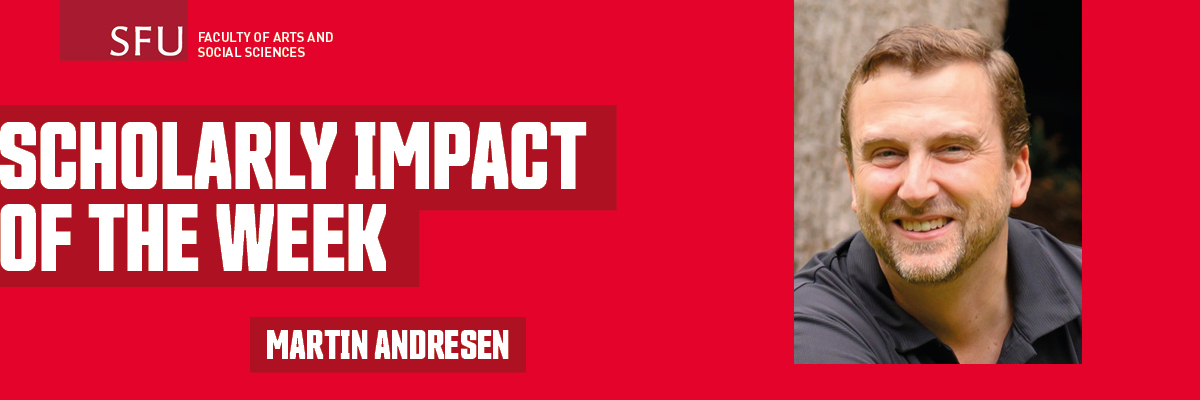
Exceptional events provide social scientists an opportunity to observe how society responds in unprecedented situations. Will extreme circumstances lead to increased social cohesion and institutional support or to disorganization and crime?
According to researchers, criminal events vary across urban, social and demographic areas. Simon Fraser University (SFU) Professor Martin Andresen is a criminologist and associate member of SFU’s Department of Geography who investigates environmental criminology—the study of criminal behaviour as it correlates with social environment using applied spatial statistics and geographical information analysis. He has both locally and internationally contributed to the study of crime and policy, and published widely on this topic.
In the sudden, natural experiment of the COVID-19 pandemic and lockdowns, Andresen wanted to understand if there were any significant changes in the types and numbers of crimes in Vancouver, British Columbia. He collaborated with Criminology Professor Tarah Hodgkinson from Wilfrid Laurier University to analyse 10 types of crimes in 22 Vancouver neighbourhoods. The study revealed that the pandemic did change crime in the city—in some predictable ways. For example, property crime in downtown areas decreased as businesses closed. However, property-related crimes increased in the wealthier neighbourhoods of Vancouver as people began to work from home.
Andresen’s article, In a world called catastrophe: the impact of COVID-19 on neighbourhood level crime in Vancouver, Canada, discusses the findings of the study.
We talked with Professor Andresen about his research.
Your article mentions that property crime shifted from the Vancouver downtown core to neighbourhoods where people were working from home. Your research also demonstrated that crimes associated with heightened anxiety and frustration such as assaults increased. Can you comment on the theoretically predictable criminal behaviours you observed?
The shift in property-related crime is theoretically predicted or explained considering opportunity theory. With the shuttering of the economy during COVID-19, those who were privileged enough to keep their employment and work from home—myself included—removed opportunities from downtown largely because there were fewer vehicles to steal or steal from. The increase in violence downtown relates to social disorganization in that these neighbourhoods do not have the social supports to repel crime during times of constant strife such as homelessness, addiction issues, etc., or increased strife such as a pandemic.
You found that not all crimes were opportunistic, but some related to social disorganization theory—such as crimes increasing in poverty-stricken neighbourhoods. Can you elaborate on that finding?
Yes, we found that the poverty-stricken areas of Vancouver suffered from increases in violent crime during the pandemic. These are areas with fewer economic resources and social supports to draw upon during an exceptional event like the pandemic. These neighbourhoods have a large portion of people who struggle with insecure housing, homelessness, alcohol and drug addiction, high levels of violence and mental health challenges. Individually, these factors make it difficult for people to access economic and social resources at any time, but this is exacerbated during an exceptional event such as COVID-19.
Do you think government interventions such as the Canada Emergency Response Benefit (CERB) helped prevent an escalation of crime? Or, did the shift in collective behaviour due to lockdowns, create more social cohesion and less opportunity for crime to occur?
I am not aware of research that investigates the impact of CERB or any changes in collective behaviour, but financial support during difficult economic and social times will most definitely help prevent crime. The difficulty is getting that support to those in greatest need. These are people who may not have a stable address or a bank account. The effects on our marginalized populations during the pandemic have only highlighted the need for more and better economic and social supports in our communities. The next stage of our research on the impact of COVID-19 on crime is to investigate the differential impact of CERB and other government support on crime: did places with better support systems experience changes in crime differently than those that did not?
What other insights on specific, localized crime have you gathered from this study—and from your ongoing research—should we be paying attention to as we move out of the pandemic?
We need to pay attention to those most marginalized populations in our communities and divert resources to help those in need. The pandemic has—and still is—impacting everyone, however, imagine living through the pandemic with insecure housing, addiction issues, mental health issues, higher levels of violence, and then the loss of employment and other social supports. The pandemic has shown how vulnerable we all can be, but it has also revealed the extra suffering felt by our marginalized communities in a country that prides itself on social justice and being a social democracy.
SFU's Scholarly Impact of the Week series does not reflect the opinions or viewpoints of the university, but those of the scholars. The timing of articles in the series is chosen weeks or months in advance, based on a published set of criteria. Any correspondence with university or world events at the time of publication is purely coincidental.
For more information, please see SFU's Code of Faculty Ethics and Responsibilities and the statement on academic freedom.